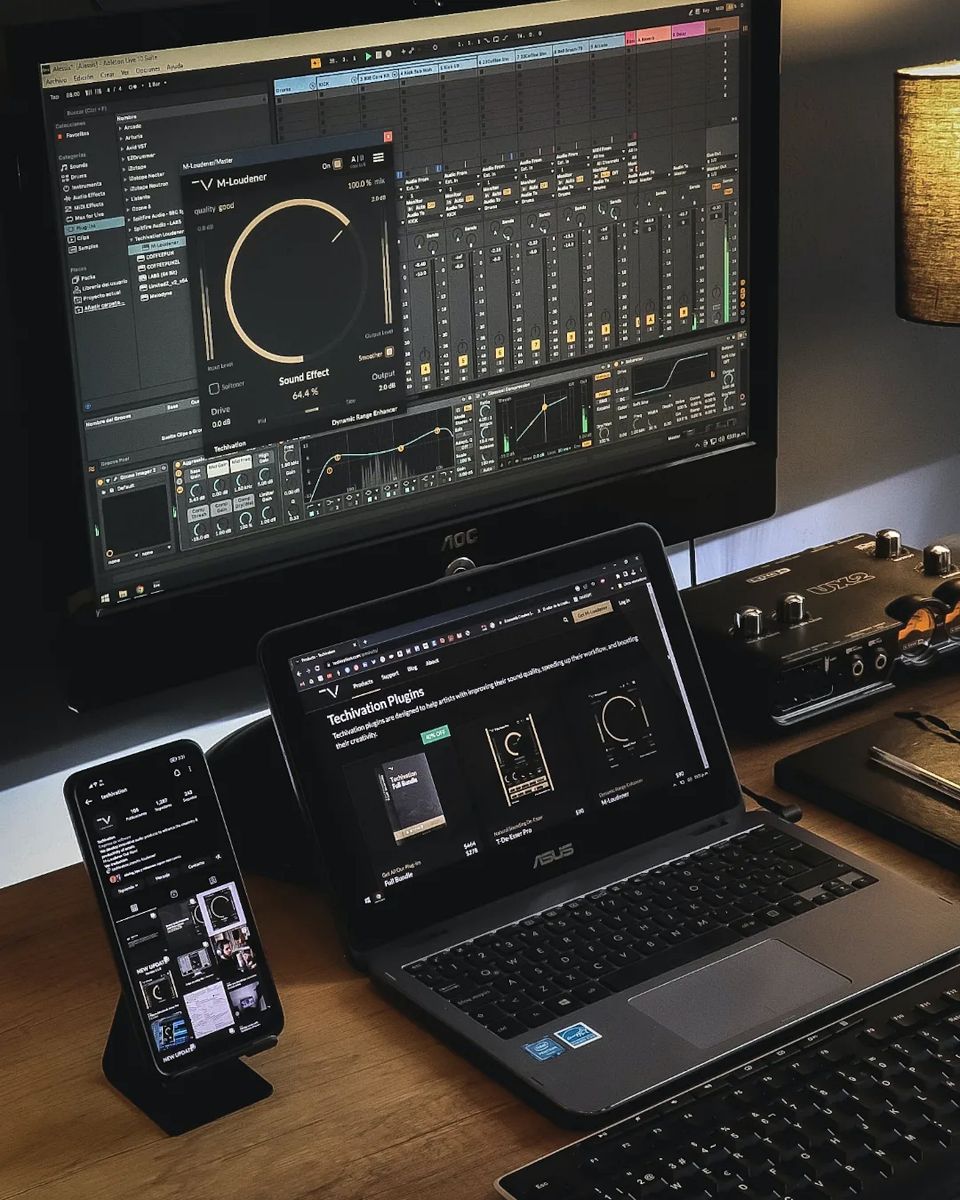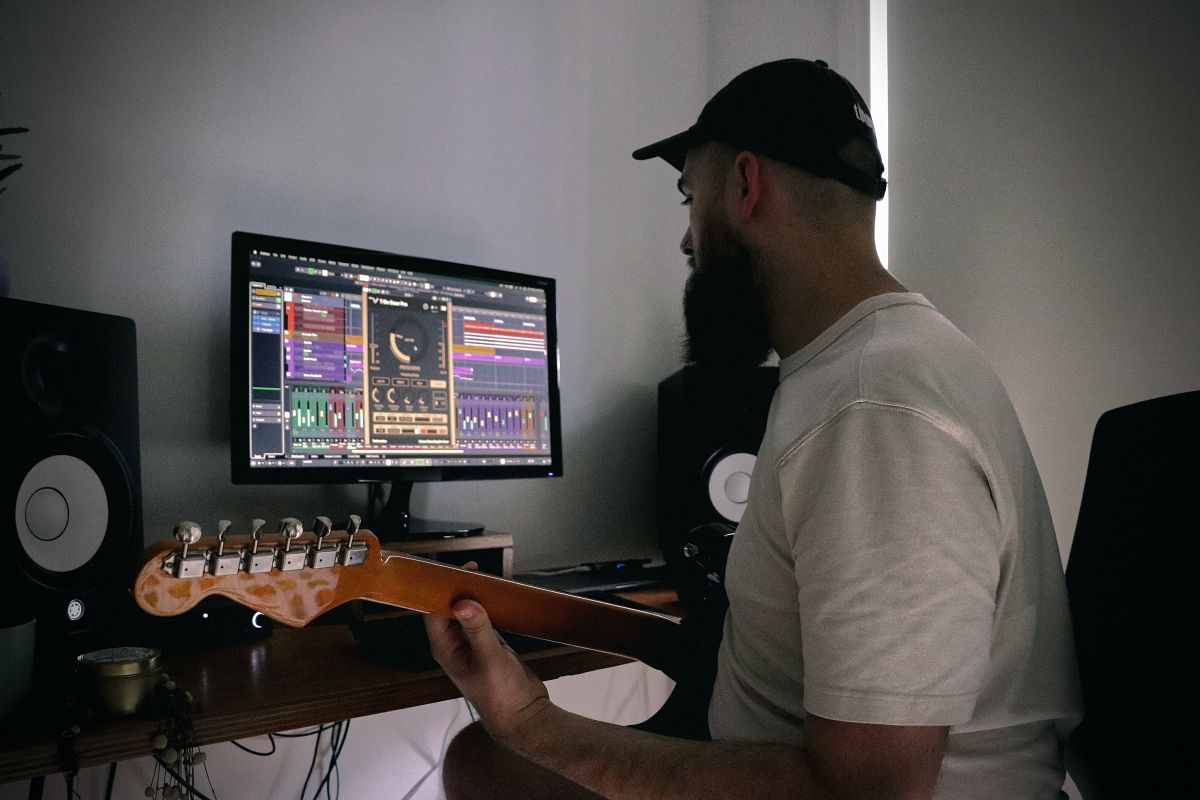Contents
Definition
A saturator, in the context of audio processing, is a tool or plugin used to add harmonic distortion to an audio signal. Its primary role is to emulate the warm and pleasing saturation effects that were once achieved through analog hardware, like tape machines or analog consoles. Saturators can impart richness, depth, and character to audio by introducing harmonics, making it sound fuller and more vibrant.

How It Works
A Saturator plugin is primarily used to apply the saturation effect, commonly found in analog audio equipment, to digital audio. This saturation effect injects additional harmonics (overtones) into the audio signal, making it sound richer and warmer.
The saturation effect operates on the following principles:
- Input Signal and Harmonic Generation: The Saturator takes in an input audio signal, which contains various frequency components generated from the original audio source. The Saturator takes this input and generates harmonics.
- Nonlinear Transformation: The Saturator applies a nonlinear transformation. This means that when the strength (amplitude) of the input signal exceeds a certain threshold, that portion is distorted in a nonlinear fashion. This distortion enriches the audio signal. The threshold can be adjusted to control the amount of distortion.
- Adding Harmonics: Nonlinear distortion adds new harmonics to the original audio signal. These harmonics are related to the frequency components of the input signal, enhancing the audio's richness.
- Tone Control: Saturator plugins typically offer various parameters for users to adjust the desired tone. These parameters may include distortion amount, distortion type (e.g., soft clipping, hard clipping), and frequency response curve.
- Output: Once the Saturator process is complete, the final output is produced, with the saturation effect applied to the audio signal.
Saturators are used in various music production and audio engineering tasks. For example, they can be applied to vocal, instrument, or drum tracks to enhance the mixing process or to infuse the warmth of analog audio into digital recordings. Small amounts of saturation add richness to the timbre, while excessive saturation can be used to create specific effects or styles.

Saturation Types
Saturation comes in various forms and principles, primarily used to emulate or reproduce the characteristics commonly found in analog audio equipment. Below, we will explain four widely recognized types of saturation.
Tape Saturation
Tape saturation aims to emulate the characteristics of analog tape machines, which were widely used in recording studios in the past. It adds harmonics to the audio signal, resulting in a warm and smooth sound. It can also provide a subtle compression effect.
Class A Saturation
Class A amplifiers are known for their nonlinear operation and low distortion characteristics. Class A saturation seeks to distort the audio signal using the characteristics of Class A amplifiers, creating a warm and natural sound. It is commonly used in electronic music and other genres.
Tube Saturation
Tube saturation replicates the characteristics of tube amplifiers, which were commonly used in the past. Tube saturation warms up and adds harmonics to the original audio signal, producing a soft distortion and warm tone. It is frequently used in guitar and vocal processing.
Transformer Saturation
Transformer saturation utilizes the properties of audio transformers, which play a crucial role in signal transformation and isolation. Transformer saturation aims to distort the audio signal using transformer characteristics, resulting in a unique coloration and gritty sound. It is commonly associated with vintage analog equipment.
Each saturation type provides unique tonal characteristics, and audio engineers and music producers utilize these saturations to achieve their desired sound effects.
Precautions when Using a Saturator
When applying a saturator to audio, it's essential to be mindful of the following precautions:
Start Conservatively
Begin with subtle saturation settings and gradually increase the effect to avoid over-saturation, which can result in unwanted distortion.
Monitor Levels
Keep a close eye on signal levels to prevent clipping or distortion that may occur when the input signal is too hot.
Use EQ If Necessary
Consider using equalization (EQ) before or after saturation to shape the tone and balance the frequencies as needed.
Preserve Dynamics
Be cautious not to squash the dynamics of the audio; retain the natural ebb and flow of the sound whenever possible.
Experiment and Listen
Experiment with different saturation settings and actively listen to how they affect the audio to achieve the desired sonic character.

Recommended Saturator Plugins
Here are five recommended saturator plugins known for their quality and versatility:
FabFilter Saturn
An advanced saturator with a wide range of distortion styles and multiband processing capabilities.
Soundtoys Decapitator
A popular plugin that emulates analog saturation and distortion effects, known for its warmth and character.
Waves Kramer Master Tape
An emulation of the classic analog tape saturation found in vintage tape machines.
UAD Thermionic Culture Vulture
A high-quality tube distortion and saturation plugin, prized for its harmonically rich sound.
Softube Saturation Knob
A simple but effective free saturator plugin that offers control over the amount of saturation applied.



